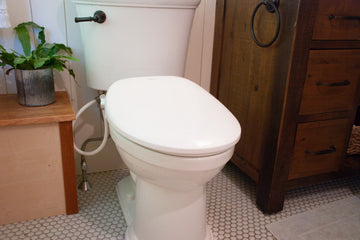In recent years, the world of restroom facilities has witnessed a revolution unlike any other. The advent of innovative toilet technologies has not only elevated the standard of hygiene and comfort but has also introduced elements of sustainability and smart home integration. For those in the Industry QA sector, understanding these advancements is crucial as they redefine how we perceive and interact with bathroom spaces.
The initial wave of curiosity about how these technologies function and their potential impact on everyday life is understandable. As we delve deeper, we'll uncover how these innovations are setting new benchmarks in the industry.

The Evolution of Toilet Technology
Over the years, toilets have evolved from basic sanitation facilities to sophisticated systems that prioritize user comfort and environmental responsibility. The journey from traditional to modern toilets is marked by several key developments, including the introduction of automated functions, water-saving mechanisms, and even health monitoring features.
Today, manufacturers are not just focusing on the essentials of sanitation, but are also integrating technology to enhance user experience. According to a recent article on the future of toilet technology, the emphasis is on creating products that are not only functional but also intuitive and eco-friendly.
Key Features of Modern Toilets
Smart Toilets
One of the most significant innovations in toilet technology is the advent of smart toilets. These high-tech units often come equipped with features such as automated lid opening and closing, self-cleaning capabilities, and even integrated music systems. For an in-depth understanding of these features, you might want to explore this smart toilet guide.
Eco-Friendly Designs
Water conservation is a critical concern in today's world, and toilets are no exception. Innovative designs now include dual-flush systems and water-efficient flush mechanisms that significantly reduce water usage without compromising on performance. Companies are continually striving to produce models that meet stringent environmental standards while providing optimal functionality.
Space-Saving Solutions
For urban dwellers, space is often at a premium. Recognizing this, manufacturers have developed compact toilets that fit seamlessly into smaller bathrooms. These designs do not sacrifice comfort or utility, making them ideal for modern living spaces. Learn more about these solutions in the article on small bathroom innovations.
Impact on Industry QA
For professionals in the Industry QA field, these innovations present both opportunities and challenges. Ensuring that these advanced systems meet quality and reliability standards is paramount. The integration of new technologies requires rigorous testing and evaluation to guarantee that they perform as intended in various conditions.
Moreover, as the demand for these technologies grows, there is an increased need for industry professionals to stay informed about the latest trends and advancements. This knowledge not only aids in product development but also enhances the ability to maintain high standards of quality assurance.
Future Prospects
Looking ahead, the future of toilet technologies appears promising. As consumer expectations evolve, so too will the innovations designed to meet those needs. The focus will likely remain on enhancing user experience, increasing sustainability, and integrating health-monitoring features. For further insights into what the future holds, consider reading this comprehensive guide.
Conclusion
The world of innovative toilet technologies is dynamic and ever-evolving. As these advancements continue to unfold, they offer exciting possibilities for improving hygiene, comfort, and sustainability in restroom facilities. For those in the Industry QA sector, staying abreast of these changes is essential in order to ensure that these technologies meet the highest standards of quality and functionality. The journey is just beginning, and the potential for future developments is vast.

FAQs
What are the main benefits of smart toilets?
Smart toilets offer numerous benefits, including enhanced user convenience through features like automatic flushing, heated seats, and self-cleaning functionalities. They also contribute to water conservation and can even offer health monitoring capabilities.
How do innovative toilet technologies impact water usage?
Many modern toilets incorporate water-saving features such as dual-flush systems and efficient flush mechanisms, which significantly reduce water consumption compared to traditional toilets. This makes them an eco-friendly choice for consumers.
Are these technologies accessible to everyone?
While the initial cost of innovative toilet technologies can be higher than traditional models, the long-term savings on water bills and their eco-friendly benefits make them a worthwhile investment. Additionally, as these technologies become more widespread, costs are expected to decrease, making them more accessible to a broader audience.
This article contains affiliate links. We may earn a commission at no extra cost to you.






